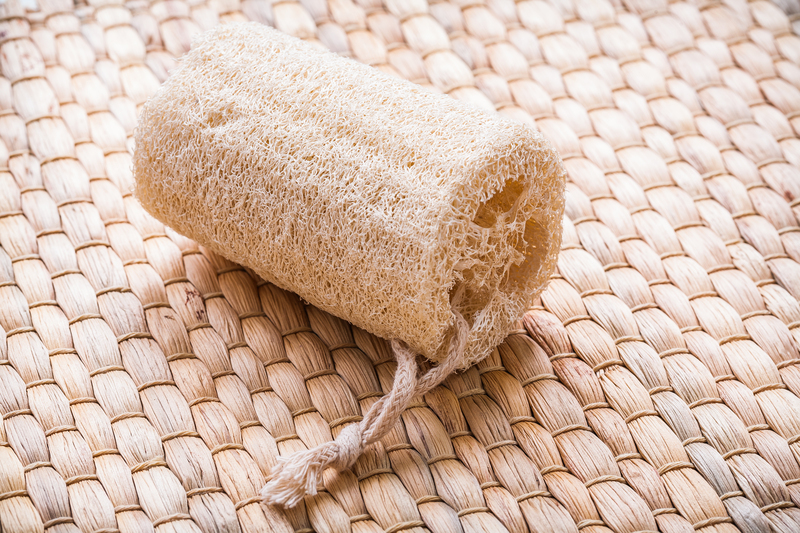Clean Your Stovetop to Perfection with These Methods
Posted on 22/05/2025
Clean Your Stovetop to Perfection with These Methods
Keeping your stovetop spotless is not just about aesthetics--it's crucial for your kitchen's hygiene, safety, and efficiency. Whether you use your range daily for elaborate meals or only on occasion, grease, spills, and burnt-on food can accumulate surprisingly quickly. Luckily, with the right techniques and a little commitment, you can clean your stovetop to perfection and maintain its shine for years to come!

Why Clean Your Stovetop Regularly?
- Health and Hygiene: Food debris and grease can attract pests and foster bacteria.
- Efficiency: A clean stovetop ensures burners work optimally with no blockages.
- Longevity: Regular care extends the lifespan of your stovetop by avoiding corrosion and stains.
- Appearance: A sparkling stove keeps your whole kitchen looking beautiful and inviting.
Types of Stovetops and Their Cleaning Needs
Before you deep clean your stovetop, it's essential to know your appliance's make and model. Different stovetops--gas, electric, glass, and induction--require tailored cleaning approaches.
1. Gas Stovetops
Gas ranges feature removable grates and burner caps. Over time, they collect greasy residues and char marks. Key cleaning points:
- Removable parts make scrubbing and soaking effective.
- Burner holes can clog, impacting flame quality.
2. Electric Coil Stoves
These classic stoves have exposed coils and drip pans underneath:
- Drip pans catch spills and must be cleaned regularly.
- Coils, while tough, need gentle wiping to prevent electrical damage.
3. Glass or Ceramic Stovetops
These sleek surfaces are easy to wipe down but scratch easily.
- Avoid abrasive cleaners or scouring pads!
- Specialized glass cooktop cleaners are available for shine without damage.
4. Induction Cooktops
Similar to glass stoves in appearance, but with electronic components beneath:
- Keep surfaces dry to protect electronics.
- Non-abrasive sponges are best for maintaining the surface.
Prepare to Clean Your Stovetop Like a Pro
Before you start to clean your stovetop perfectly, assemble these essential tools:
- Non-abrasive sponges and microfiber cloths
- Soft scrubbing brushes or old toothbrushes
- Baking soda and white vinegar
- Stove cleaner (specific for glass/ceramic models, if needed)
- Paper towels
- Optional: lemon, razor blade scraper (for glass), gloves
Step-by-Step Methods to Clean Your Stovetop to Perfection
1. Basic Daily Stovetop Cleaning Routine
Consistency keeps stubborn stains at bay. Here's a 5-minute daily ritual for flawless cooktops:
- Wipe away surface crumbs and spills after each use with a damp cloth.
- Apply a drop of mild dish soap, scrub with a sponge, and rinse off with water.
- Never let moisture seep under burners or controls--always dry thoroughly!
2. Deep Cleaning Gas Stoves
For that pristine, like-new look, devote time to deep clean your gas stovetop regularly:
- Remove Grates and Burner Caps: Let them cool, then take them off. Soak in warm, soapy water for 15-30 minutes.
- Clean Surface: Wipe the stovetop base with a cloth dipped in soapy water. Focus on corners and edges.
- Tackle Burnt-on Residue: Create a paste of baking soda and water. Apply it to stubborn spots and let sit for 10 minutes before gently scrubbing.
- Unclog Burner Holes: Carefully use a toothpick or pin--never a knife--to open up blocked holes for better flame performance.
- Rinse and Dry: Wipe all surfaces with a damp cloth and dry immediately to avoid water marks.
- Clean Grates: Scrub with a brush, rinse, dry, and reassemble.
3. Cleaning Electric Coil Stovetops
- Remove Coils and Drip Pans: Unplug coils (if possible), let cool, and gently wipe. Never submerge electrical parts in water!
- Soak Drip Pans: Place pans in hot soapy water, scrub, and rinse.
- Surface Cleaning: Wipe down surfaces with a soapy sponge, focusing on stains underneath the coils.
- Reassemble: Ensure all parts are dry before plugging back in.
4. Perfect Glass or Ceramic Stovetops
- Remove Loose Debris: Use a soft, dry cloth.
- Treat Stubborn Residues: Sprinkle baking soda on tough spots, then lay a towel soaked in hot water over it for 15 minutes.
- Scrape Off Burnt-On Gunk: Gently use a razor blade at a 45-degree angle.
- Polish: Apply specialized glass stovetop cleaner for a streak-free finish.
5. Induction Stove Care
- Immediate Wipe: Since induction cooktops don't get as hot, spills don't bake on. Clean after cooking while surface is still slightly warm.
- No Abrasives: Use only soft sponges to avoid scratches.
- Electronics Caution: Avoid excessive moisture around buttons or panel edges.
Natural Cleaning Methods for Stovetops
Want to clean your cooktop without harsh chemicals? Kitchen staples like baking soda, vinegar, and lemon can perform wonders.
Baking Soda and Vinegar Solution
- Dust surface generously with baking soda.
- Spritz with white vinegar; let foam for 10 minutes.
- Wipe with a damp cloth for a sparkling shine.
Lemon Scrub for Shine
- Cut lemon in half, dip in baking soda, and rub over stained areas.
- Let sit for 5-10 minutes, then wipe clean with a wet cloth.
Pro Tips for Keeping Your Stovetop Clean Longer
- Use splatter guards or lids to prevent grease buildup.
- Wipe up spills immediately before they bake on.
- Deep clean grates and pans weekly (or more if you cook often).
- Invest in stovetop liners (for electric/gas) to catch drips and simplify cleanup.
- Polish glass tops regularly for a mirror finish without streaks.
- Keep a microfiber cloth handy for quick daily wipe-downs.
Maintenance Myths & Mistakes to Avoid
- Avoid Abrasive Pads: They scratch and dull surfaces, especially glass and ceramic cooktops.
- No Harsh Chemicals: Ammonia, bleach, or oven cleaners can corrode parts or affect electrical safety.
- Don't Delay Spills: The longer stains sit, the harder they are to remove and the more they can damage the finish.
- Never Submerge Electrical Components: Electric coils and ignition switches can short out if soaked.
Troubleshooting Stubborn Stovetop Stains
How to Remove Burnt-on Food
- Soak with warm, soapy water for 30 minutes. Scrub gently with a non-abrasive pad.
- For stuck bits on glass, scrape with a razor blade angled flush with the surface.
- Repeat with baking soda paste if needed.
How to Remove Grease Buildup
- Mix equal parts vinegar and water. Spray, let rest for 10 minutes, then wipe clean.
- For tough spots, use a degreasing dish soap directly on the stain, let sit, and scrub with a gentle brush.
How to Get Rid of Discoloration and Stains
- For glass cooktops, polish with a baking soda/vinegar paste.
- For enameled metal, soak a cloth in lemon juice and lay it over the stain for 20 minutes before wiping.

Frequently Asked Questions
How often should I clean my stovetop?
Daily wipe-downs prevent build-up, while a deep clean every week (or after heavy use) keeps things perfect.
What's the best way to get rid of cooked-on gunk?
Soak, scrape gently (with the right tool), and use baking soda paste to safely loosen debris.
Can I use oven cleaner on my stovetop?
No! Most oven cleaners are too harsh and can damage surfaces, especially glass and enamel.
Why does my gas burner litter orange flames after cleaning?
This means the burner holes could be blocked. Re-clean using a toothpick or pin, and ensure all parts are dry and correctly placed before relighting.
Conclusion: Restore Shine & Performance with Smart Stovetop Cleaning
With these comprehensive methods, it's simple to clean your stovetop to perfection using either natural or commercial products, tailored to your cooktop's material. By tackling spills quickly, deep cleaning regularly, and following maintenance tips, you'll enjoy a gleaming, odor-free, and efficient kitchen centerpiece every day.
Remember--a little extra effort keeps your stove looking like new, ensures safe cooking, and adds a sparkling accent to your beautiful kitchen. For more tips and tricks on perfect home cleaning, bookmark this guide and transform your stovetop cleaning routine today!




